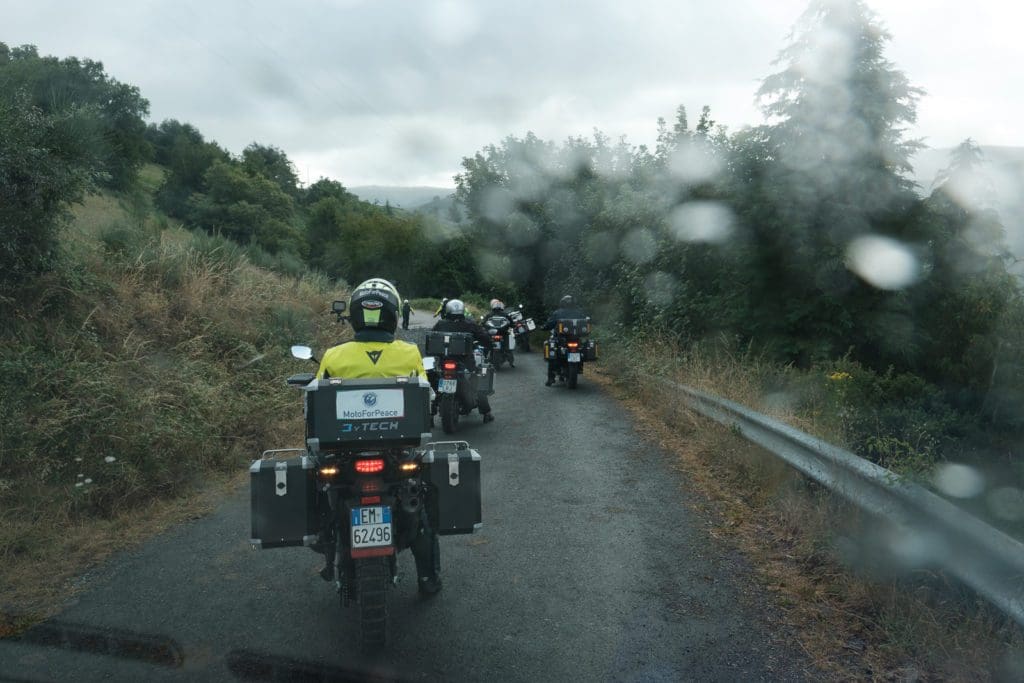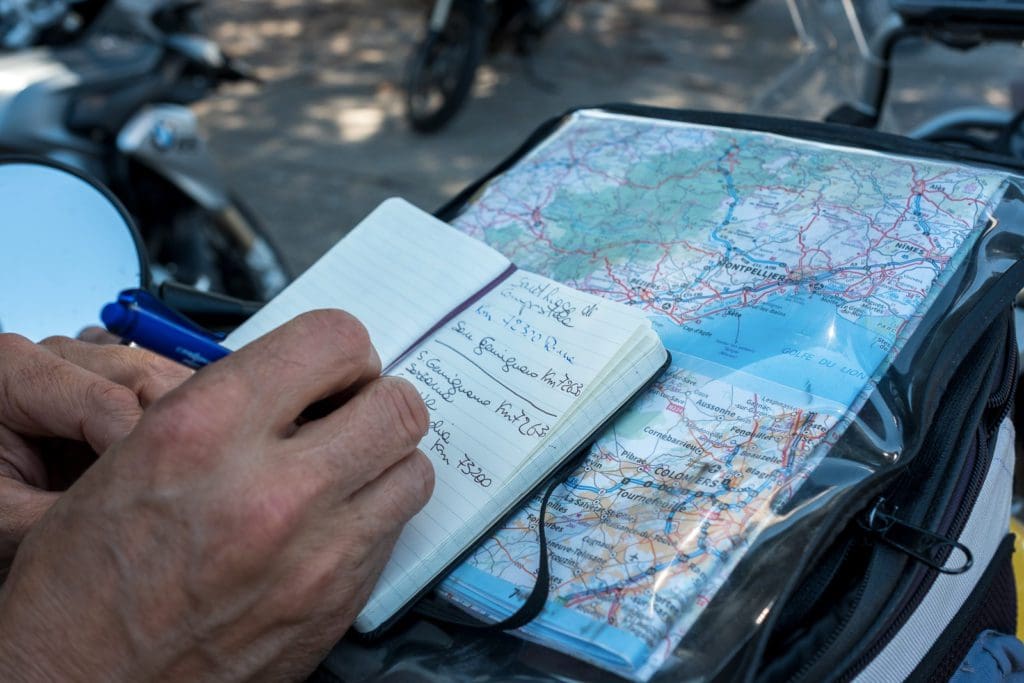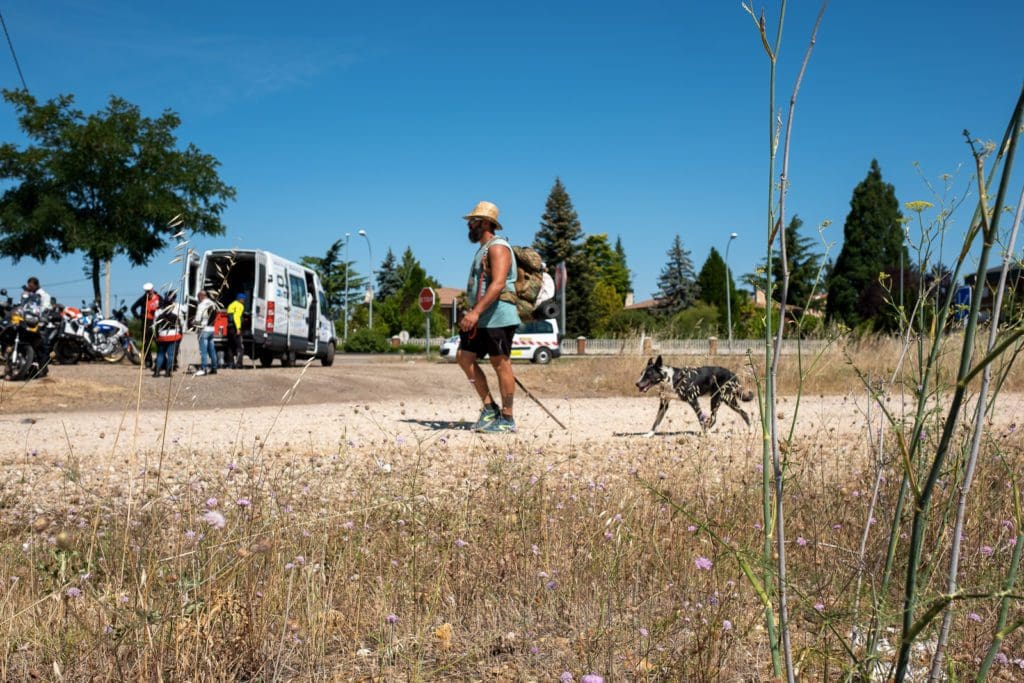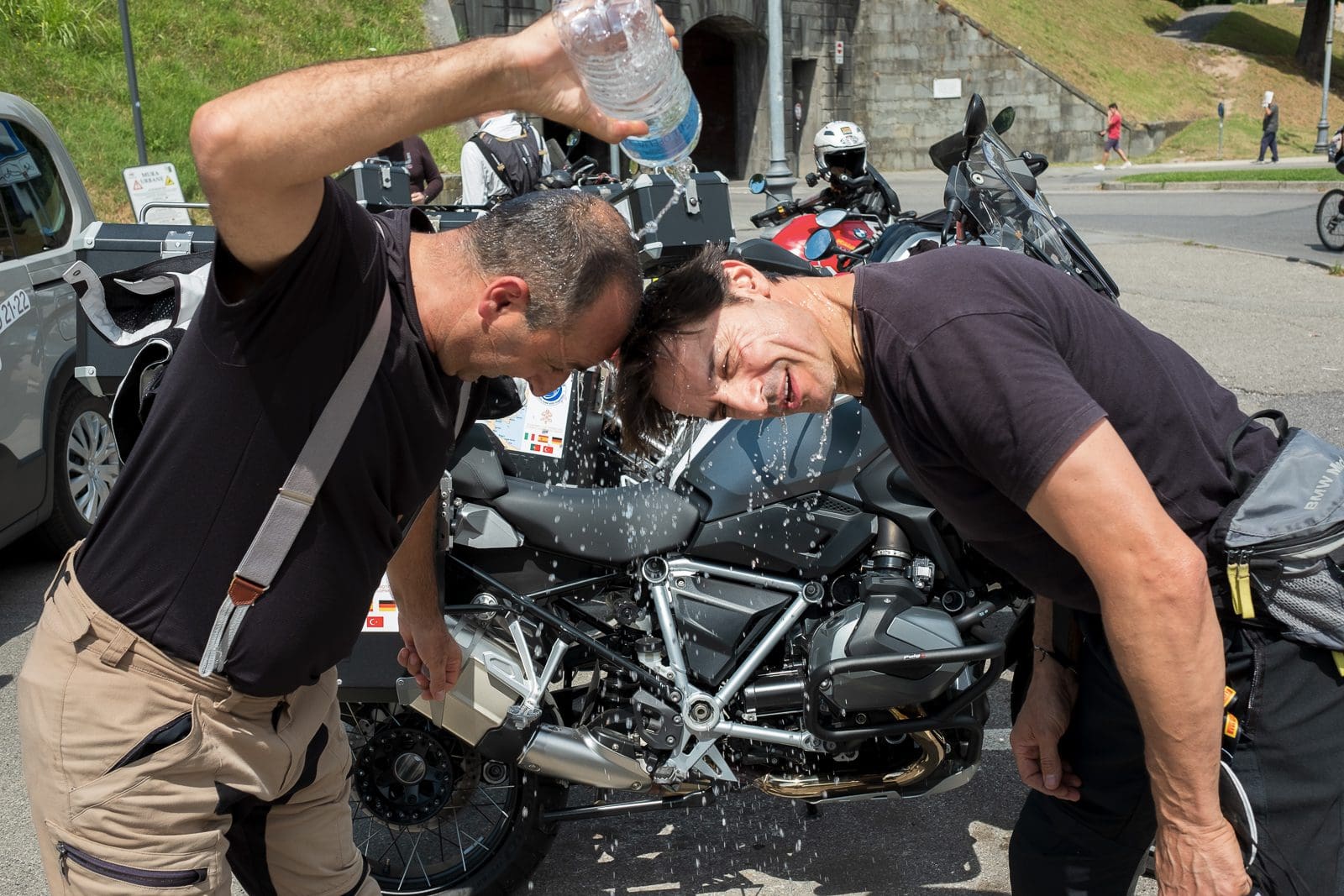Considered the journey par excellence, the Camino de Santiago is the best known and probably among the oldest routes that bring thousands of people to Galicia each year. It can be experienced as a pilgrimage of faith or approached in a secular way, as an inner experience or as an unmissable stage to be marked on the map of a self-respecting traveller. I have thought several times about two great journeys I would have liked to make at some point in my life: to arrive in Beijing along the Trans-Siberian Railway and to Santiago de Compostela with my backpack and legs. But never until today had I thought of finding myself with a helmet on my head, travelling some 5,000 kilometres and arriving at Obradoiro Square in Santiago de Compostela on a motorbike. Instead, not only did it happen, but it happened on the ‘perfect’ day: 25th July 2021, during the Xacobean or Jacobean Holy Year. This year the Saint James Day, the 25th of July, fell on a Sunday. This recurrence usually occurs every five or six years but sometimes it takes even eleven years to experience the holy year.

A journey on a motorbike
From this premise, one could easily imagine me riding a motorbike and grinding out kilometres, but this is only partly true because it was not me who was riding it, as I hardly know what an engine is! I was lucky enough to be a passenger and a witness that a pilgrimage can be faced with the same intensity, regardless of how you arrive at the destination or the motivations that drive you to undertake it. My travelling companions were people who, for twenty years, have combined their passion for motorcycles with humanitarian missions worldwide, giving life to the MotoForPeace association in 2001. This year, to commemorate the 20th anniversary of its founding, the association decided to undertake the Camino de Santiago, by motorbike, of course. This vehicle could almost be described as an extension of themselves and that by now has accompanied them around the world. When one thinks of the Camino de Santiago or listens to the stories of those who have experienced it, it seems that doing it on foot is the best way to experience it. Instead, I believe that any path has several possible roads. It is up to each person to choose which one to take. Surely the experiences will be different, but the beauty lies precisely in this: in the differences. Just as the meaning of our travel lies in the journey itself, regardless of the road, the means and often even the destination.
Twenty of us set off with 15 motorbikes, each with a number sticker attached to the front of the windscreen, each a key part of a large column. Oh yes, because travelling by motorbike, especially in a group, is certainly not an anarchic mess of ego and madness: there are rules and you need to have a good dose of common sense. Everyone is responsible for himself but also has eyes for others. The safety distances between one motorbike and another must necessarily be respected. It is important to stay in the column, without moving too far to the centre of the carriageway, so that the leader can better check that nobody is missing. And if it happens to miss someone left behind, the last ones warn those ahead of them, so that they can stop as soon as possible and rejoin the group. Sometimes it happens that the pace is that of a cruise, but everyone knows that they have to be patient, because there is always a good reason that justifies this choice. Refuelling is very important and necessary for motorcycles but also an excellent excuse to stretch creaky knees, stiff backs and shoulders. We generally stopped for petrol half every 150 kilometres, with or without a dry tank, because the most important thing is to have a full tank. What the road holds is always a mystery, the unexpected is often lying in wait, and one should never be caught unprepared.

Departure on a summer day from a semi-deserted Rome
It was July 17, at dawn, on a morning with a strong Roman zest, when the engines started. I was sitting behind Valter, riding his yellow “pupa”, number 10, heading towards the Vatican to receive the blessing of Cardinal Peter Turkson, Prefect of the Dicastery for Promoting Integral Human Development and a great supporter of MotoForPeace expeditions. The semi-deserted streets of Rome, gilded by an almost dreamlike light, made her lose that haughty air she often assumes, showing her to be almost penetrable and hopelessly beautiful. A very light mist embraced the entire column of motorbikes. I could see it perfectly from my position at the rear. In front of me, there was a column of men ready to travel along the Via Francigena, then on to France, then again to Spain, along the Camino de Santiago, each with their thoughts locked in their helmets.
On the first day, we retraced several stages known to pilgrims on their way to Rome, such as Sutri, Bolsena, the ancient medieval towns of San Quirico, and San Gimignano. Sun and rain alternated, giving a different rhythm to the pace and above all to the temperature, at times suffocating. Unlike the following day, which saw us pass through Lucca, Sarzana and finally Genoa, before crossing the border and arriving in France, where the sweltering July heat gave us no respite.
The French leg was perhaps the least compelling, made up mostly of traffic, speed cameras and toll booths, which dispersed the bikes, forcing us to make frequent stops to rejoin the group. Looking in the rear-view mirrors was a constant, with exaggerated heat, amplified by that of the scorching engines. Under such circumstances one became more intolerant and a break to regenerate mind and body was a must. Thus began a dialogue made up of various gestures and signals between the motorcyclists which led everyone towards a single destination: the coffee break. In these goliardic and refreshment moments, I reflected on how essential the harmony of the group was in trips of this kind. And also how the peculiarities of each of them have been fundamental in creating and maintaining a general balance. I didn’t have in front of me only fanatical motorcyclists, expert or inexperienced, those from bars or from the track. I was faced with men, each in his own way, with his own weaknesses or strengths, some more expansive, some shy, some more tolerant, some less, the talkative and the one of few words, the precise, the punctual and the latecomer or messy. All, however, united by a single common denominator: the motorbike, considered almost as a part of themselves. Striking were for me – I’m not a motorcyclist – the stops during which the bikes were caressed, listened to, checked, personalized with gadgets purchased in the service area together with a snack. On this trip, I learnt that for a motorcyclist the motorbike is not just a vehicle, but a real travelling companion, and should be treated as such.

Ultreia! and our Let’s go!
Ultreia! On the Jacobean routes, one can often hear this expression among pilgrims. It is a form of greeting or encouragement, meaning ‘let us move on’ or ‘let us go further’. I smiled every time I heard it because I instinctively compared it to Let’s go! which Bernardo, the group leader, never missed an opportunity to repeat, even several times, at each stop. And like a ritual, aliens could be seen equipping themselves with calm and care: jacket, cap, helmet, gloves, a few pats on the back, smiling eyes, the roar of engines, the column slowly regaining shape and off back on the street. Even in seemingly simple or trivial situations such as these, the sense of unity and community that is usually experienced in the Camino de Santiago among pilgrims and that makes no distinction whether one wears a helmet or has a stick in hand, still came through.
The landscape began to change and with it the climate, the scents, the atmosphere. We were getting to the heart of the journey. We were in Roncesvalles, ready to cross the Pyrenees. Here we were given the Credencial del peregrino, a sort of passport that would collect all the stamps of the hostels where we would be staying. This time it was Marco with his bike ‘the most beautiful of all’, as he often remarked, who was leading me towards the woods of Navarre. The road was a continuous snaking of bends. Balance and trust in Marco allowed us to advance with synchronized and fluid movements. I could even turn around and see the column from the front. The bikes all had the same pace and leaned into every corner at the same angle. Fragrant pines, birches, chestnuts, eagles soaring in flight, medieval bridges made the atmosphere almost surreal, to the point that the paladin Orlando could have appeared with his horses at any moment. Ultreia! We would have shouted at them, or simply ‘Let’s goooo!

Santiago de Compostela and our kilometre zero
And off we went, and how we went! Further and further where yellow arrows on blue signs indicated. The Spanish route was an alternation of emotions, colours, smells, breathtaking views. We went from Gothic cathedrals to castles, from towns to tiny villages lost in the mountains where cows, goats and chickens ran from one side to the other. The journey from Burgos to Leòn was particularly felt, from several points of view. Straights that began without knowing where they ended bisected the Spanish mesetas – desert plateaus of boundless wheat fields of intense yellow color, printed on a saturated blue sky. Just like the yellow of the stylized shell with nine rays on a blue background, the symbol par excellence of the Camino. Getting through the mesetas was challenging. The sun was fierce that day, I felt my hands burn, my lips dry and under my jacket unbearably hot. No bends on the horizon to interrupt the rhythm of the road. Tiring for me, but even more for my companions who were riding the bikes. It was common to see some bikers stand up to get some air, revive their now-absent lower limbs and enjoy the spectacle of nature. Probably for some of them the thoughts burned brighter than the sun. Everyone on this journey had brought something with them: some accumulated fatigue from work, some heavy and oppressive ballasts to want to give away to the wind, some beautiful memories to continue savoring along the way. Sometimes watching them, I wondered how so much noise, hostile weather, concentration, adrenaline, and precision mechanics, could go hand in hand with the peace and that sense of lightness they conveyed once they got off their bikes. I believe there are places, moments or situations that can shake our hearts if connected to our passions. Perhaps this is the answer.
One such moment was crossing the streets of Santiago on a motorbike and seeing the spires of its Cathedral appear out of nowhere to find ourselves shortly afterwards in front of its grandeur in the Obradoiro square. It was time to drop everything – helmets, jackets, bikes – and concentrate on our thoughts. Celtic music played by a few gaitero accompanied our steps. It was the arrival: a sum of distances overcome on foot, by bike or motorbike, converged in a single point. It was a drawing of a path taking shape. A point to start again from zero, or to get to zero, and go even further, still forward, to the end of the world.
Ultreia, then, … and buen camino!



